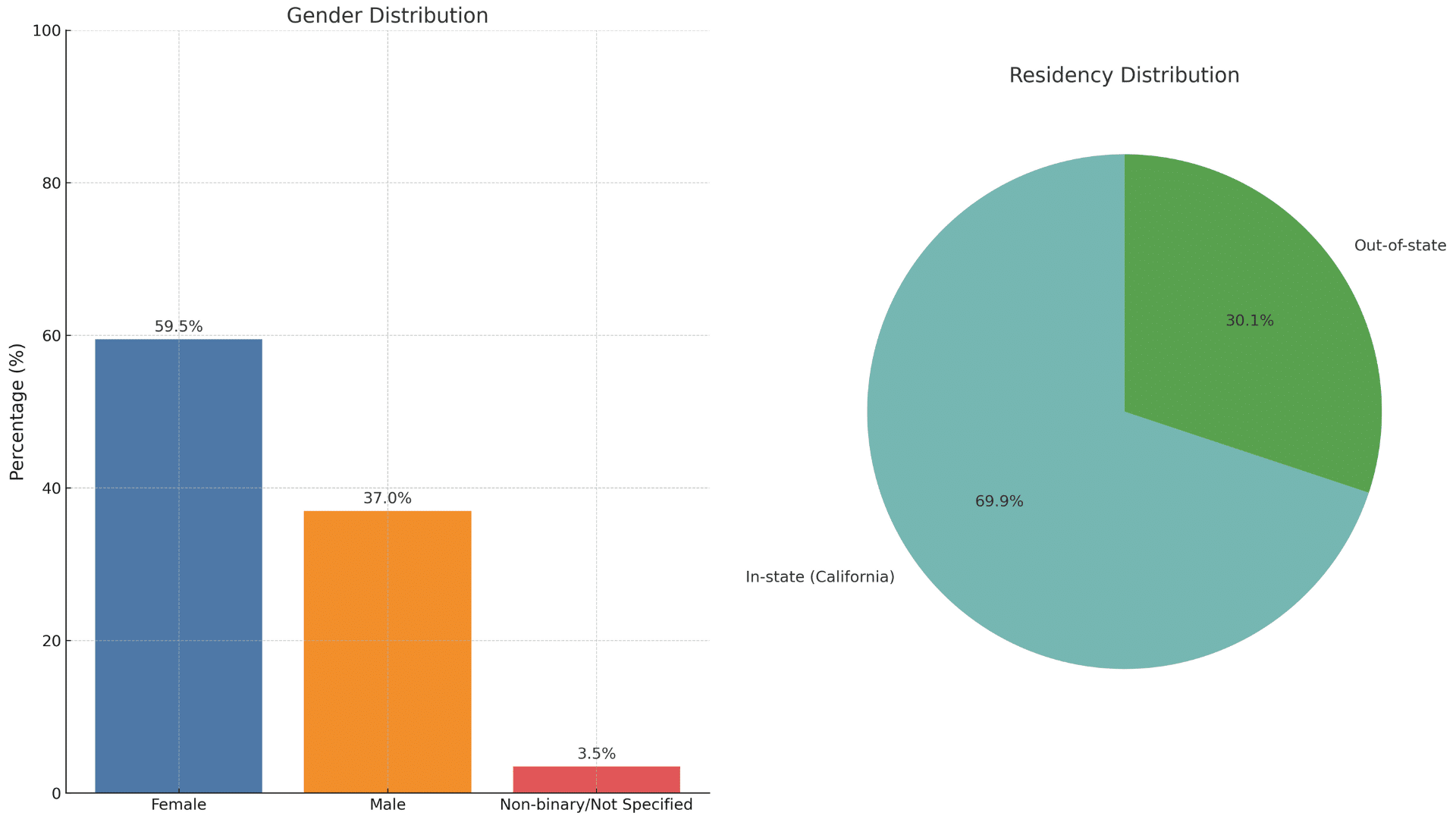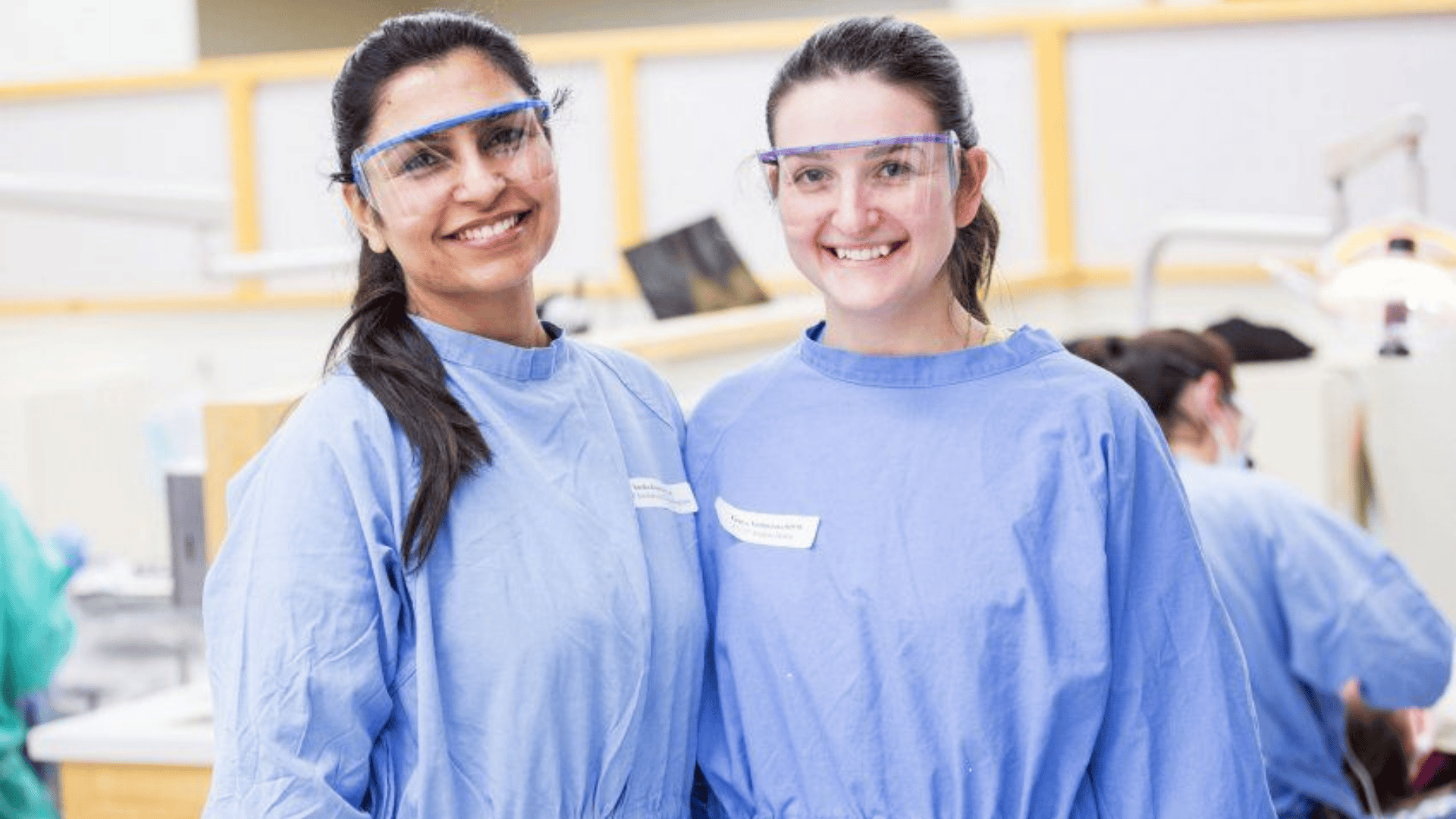Want to join one of America’s top medical schools?
The University of California, San Francisco (UCSF) School of Medicine consistently ranks among the nation’s top five for both research and primary care.
Here’s the reality: UCSF medical school’s acceptance rate is extremely low. Very few students get in compared to those who apply. You’ll need stellar grades and impressive test scores.
This guide covers UCSF’s acceptance rates, average MCAT and GPA requirements, and in-state versus out-of-state chances.
We’ll reveal what makes applications stand out to admissions committees.
UCSF Medical School Acceptance Rate
The UCSF School of Medicine’s acceptance rate for the 2025 entering class remains among the most competitive in the nation, at approximately 1.8%.
In comparison, the national average acceptance rate for U.S. medical schools hovers around 7% or higher.
This places UCSF in the same league as Harvard, Stanford, and Johns Hopkins in terms of admissions selectivity.
For the most recently released application cycle:
| CATEGORY | NUMBER/PERCENTAGE |
|---|---|
| Total Applications (Fall 2024) | 8,774 |
| Applicants Interviewed | 525 (5.9% of total) |
| Final Matriculants | 161 |
| California Residents | 71% of those accepted |
Out of nearly 9,000 applicants, fewer than 200 are admitted, highlighting UCSF’s exceptional selectivity with a 50:1 ratio and top-tier medical school status.
Academic Requirements for UCSF
Getting into UCSF requires exceptionally high test scores and grades. Let’s break down exactly what numbers you need to be competitive.
1. MCAT Score Requirements
The UCSF MCAT average for recent entering classes is 517-518, solidly within the 90th percentile nationally.
This places successful applicants well above the national average MCAT score of approximately 511.8 for all medical school matriculants.
Key MCAT statistics for UCSF include:
- Average MCAT: 517-518
- Score range (10th-90th percentile): 511 to 524
- Competitive threshold: 515+ recommended
- Validity period: MCAT scores from the last three years are accepted
How UCSF Compares to Other Top Schools
| MEDICAL SCHOOL | AVERAGE MCAT SCORE |
|---|---|
| UCSF | 517–518 |
| Harvard | 520+ |
| Stanford | 519–520 |
| Johns Hopkins | 521 |
2. GPA Expectations
Academic excellence at UCSF is reflected in average GPA scores of 3.85-3.89, with successful applicants commonly reporting science GPAs nearly as high as their overall GPA.
The statistics break down as follows:
- Average GPA: 3.85-3.89
- GPA range (10th-90th percentile): 3.6 to 3.99
- Recommended minimum: 3.2+
Applicants with a solid upward grade trend or notable post-baccalaureate coursework may have competitive standing. But falling below the 3.2 threshold generally makes admission unlikely.
3. Classes You Must Take
Before you can apply, you need to finish these classes:
- Biology: 1 full year with lab work
- Chemistry: 1 year, including organic chemistry with lab
- Biochemistry: At least one class
- Physics: 1 semester
They also really like it when you take classes about how people behave and think. This helps you understand patients better.
Who Gets Into UCSF?

Let’s discuss the accepted students. UCSF works diligently to attract students from diverse backgrounds.
- Gender distribution: Approximately 59.5% female, 37% male, and 3.5% non-binary
- Average age: 24 years (not published for every cycle, but consistent with national trends)
- Underrepresented in medicine: 54% of the class
- California residency: 69.9% are in-state residents
If you’re from California, you have a much better chance of getting in. UCSF is committed to training doctors who will work in California and provide care to the state’s residents.
In-State vs Out-of-State
UCSF gives a significant preference to California residents: approximately 71%–77% of matriculants are from California. This creates a clear advantage for in-state applicants in an already competitive process.
In-state acceptance estimates hover around 3.1–3.2%, while out-of-state acceptance is much lower at approximately 0.8–1.0%.
Recent data showed that 342 in-state students were interviewed out of 4,262 verified applicants, whereas only 240 out-of-state students were interviewed out of 5,179 verified applicants.
For out-of-state students, this means facing even steeper odds in an already ultra-competitive admissions landscape.
UCSF Application Process

Getting into UCSF is a detailed process. Think of it as a series of steps, each one crucial to moving forward.
Step 1: First Application (AMCAS)
Submit the primary AMCAS application with your academic records, MCAT scores, and list of activities.
Make sure accuracy and completeness because this form forms the foundation of your UCSF medical school application review.
Step 2: Secondary Application
If invited, complete UCSF’s secondary application.
This includes additional essays designed to assess your personal qualities, commitment to medicine, and alignment with UCSF’s mission of advancing health equity and excellence.
Step 3: Interview Invitation
Only about 5–6% of applicants receive an interview invitation.
This competitive stage means UCSF sees potential in your application, giving you the chance to share your personality and goals directly.
Step 4: The Interview
Interviews help UCSF evaluate your interpersonal skills, motivation, and fit for their program.
Be authentic, well-prepared, and ready to demonstrate your values and dedication to serving diverse communities.
Step 5: Final Decision
UCSF announces admission decisions in March, with some applicants accepted from the waitlist later.
Stay patient, remain positive, and continue to demonstrate your commitment until the process is officially concluded.
Important Dates to Remember
Planning your UCSF medical school application timeline is crucial for success. Missing key deadlines can derail your dreams before they begin.
Here are the critical dates you need to mark on your calendar:
| APPLICATION STAGE | IMPORTANT DATE | DETAILS |
|---|---|---|
| AMCAS Available | Early May | Application becomes accessible to students |
| AMCAS Submission Opens | Late May | You can officially submit your primary application |
| AMCAS Deadline | October 15 | Hard deadline, no extensions granted |
| MCAT Score Deadline | September 13 | Latest acceptable MCAT test date |
| Secondary Applications | Mid-July to November | Invitations sent on a rolling basis |
| Interview Season | September to February | All interviews conducted virtually |
| Final Decisions | February to April | Acceptance notifications sent |
| Commitment Deadline | July 1 | Final enrollment commitment required |
Must-Remember Tip: Submit your AMCAS application as early as possible; UCSF uses rolling admissions, so earlier submissions have better chances of securing interview spots.
How to Make Your Application Stand Out?

To stand out in the competitive UCSF admissions process, you need more than top grades and MCAT scores.
Gain real medical experience through volunteering in hospitals, working in clinics, or participating in research, especially studies related to healthcare innovations.
UCSF values community service, especially supporting underserved groups like low-income neighborhoods, non-English speakers, and homeless communities.
Leadership is also critical; demonstrate it by leading organizations, initiating impactful projects, or mentoring others.
These qualities show UCSF that you’re committed, compassionate, and capable of making a difference in medicine.
What Makes UCSF Special?
UCSF isn’t just another medical school. It’s a powerhouse that stands apart from the competition.
Here’s what makes this California institution truly exceptional:
- Dual Excellence Rankings: Only medical school ranked in the top 6 for both research training and primary care quality.
- World-Class Faculty: Faculty includes six Nobel laureates and 114 National Academy of Medicine members.
- Diversity Leadership: Over 35% of current students come from underrepresented groups in medicine.
- Educational Innovation: Home to the nation’s premier Academy of Medical Educators with 215+ members.
- Research Powerhouse: Second highest recipient of NIH research funding nationally, with $823.7 million.
These aren’t just impressive numbers. They represent UCSF’s commitment to training physician leaders who will shape the future of healthcare.
When you join UCSF, you’re not just getting a medical degree. You’re becoming part of a legacy of excellence that spans over 160 years.
Money Matters: Can You Afford It?
Medical school costs a lot, but don’t let that stop you from applying if qualified.
What It Costs:
- California residents: About $50,000 per year for tuition
- Out-of-state students: About $63,000 per year for tuition
- Total expenses: $87,000-$100,000 per year (including living costs)
The Good News: About 85% of students receive financial aid through scholarships and grants. The average debt for UCSF graduates is $141,000, which is lower than many top medical schools.
UCSF’s generous financial support makes this world-class education surprisingly affordable for qualified students.
Final Thoughts
Getting into UCSF Medical School is challenging, but now you have the roadmap. You know what it takes: exceptional grades, strong test scores, meaningful experiences, and a compelling story.
The competition is fierce, but UCSF isn’t just looking for perfect numbers. They want future physicians who will make a real difference.
If you’re passionate about advancing healthcare and serving communities, UCSF could be your match.
Don’t let statistics intimidate you. Every year, hundreds of students earn their white coats at this prestigious institution.
The question is: Are you ready to prove you deserve a spot?












